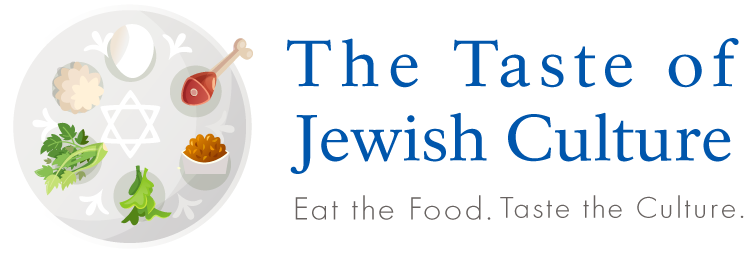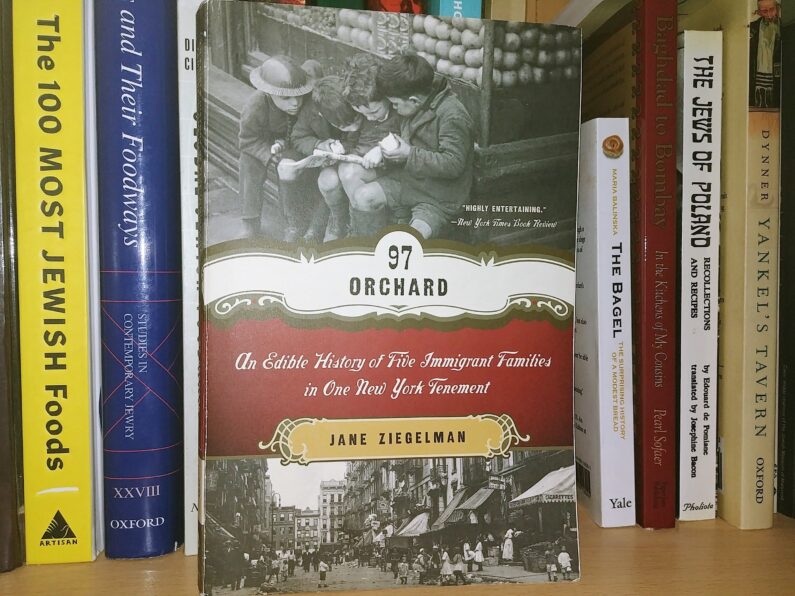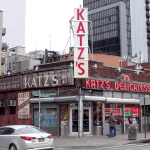This book was not exactly what I thought it would be when I purchased it. And that was a very good thing! Let me start from the beginning as I explain a bit more about this different sort of entry “From the Jewish Food Bookshelf.”
Before I bought 97 Orchard by Jane Ziegelman, I knew that it was connected with New York’s Tenement Museum, located at the title’s address (though currently moving temporarily up the street to 103 Orchard while the main historic building goes under restoration work). However, at that point I had never visited the museum, which I finally did for the first time this past fall on a day off during my U.S. lecture tour.
So when I read the book’s subtitle, “An Edible History of Five Immigrant Families in One New York Tenement,” I was really excited by the idea. I assumed that when they went through the old tenement building to turn it into a museum, they found enough material to actually be able to piece together what these different families ate while living side by side.
Well, not exactly. But what I found was in some ways better, and even provided me with some inspiration for my own work.
What’s in the Book
For starters, the five families did not all live in the building at the same time. The earliest dates to the 1860s and the latest from the late 1920s into the 1930s. Furthermore, the portrayal of their daily diets and culinary habits was not exactly the result of finding some incredible trove of information. Rather, Ziegelman speaks broadly about the types of foods that would commonly have been eaten by people at those times, belonging to the various represented communities on New York City’s Lower East Side.
And yes, those varied communities make this different in another way from many of the other books I portray in this blog series — of the five families portrayed, only two are actually Jewish. In sequence, the families are: German, Irish, German Jewish, Eastern-European Jewish, and Italian.
But all of those surprises (for me) actually made for a much stronger book in many ways! For starters, we often think of the Lower East Side of the late 19th and early 20th centuries as a giant Jewish ghetto. And while it may have been that in some ways, we must remember that there were many other people living in the area as well. By highlighting the many different cultures whose people moved through the area, Ziegelman gives us a much more nuanced portrait of what life was like there. The Jews who lived there almost certainly interacted with members of many other immigrant groups, such as those portrayed here.
Spanning a larger period of time also allows for an exploration of the changes that took place on the Lower East Side across the full time span. And though only two families are Jewish, we get the opportunities both to contrast German Jewry’s gastronomy with that of Eastern European Jews, as well as contrasts between German Jews and non-Jewish Germans.
Beyond that, while it might have been interesting to know exactly what a single family ate from a historical curiosity perspective, it certainly would not be less significant and telling. By drawing together research from numerous sources, Ziegelman instead presents us with a portrait of the broad cuisine of each community she looks at, but does so in such a way that it still feels personal to the specific families. Historic recipes add depth to each chapter as well.
This last bit is also what really made the book an inspiration for me. The greatest strength of 97 Orchard, as I see it, is the way in which it weaves food history into a broader history of the place and time. For me, that is really what food history is most useful for. It may be interesting to uncover how some dish developed or why some people used this ingredient instead of that one. But the real value, as far as I am concerned, is using food history as a window onto the broader history and culture. Reading 97 Orchard and seeing how successfully Ziegelman moves between the food writing and the broader historical writing made me realize that what I wanted to do with the book I am currently writing (but which I had yet to start at that point) was actually possible.
If you have interests in American History, Jewish History, American Jewish History, or Food History, I highly recommend this book. Very readable, fun, interesting, and well-written.
Show Me Some Love! Share My Posts With Someone Who’d Also Enjoy It!





